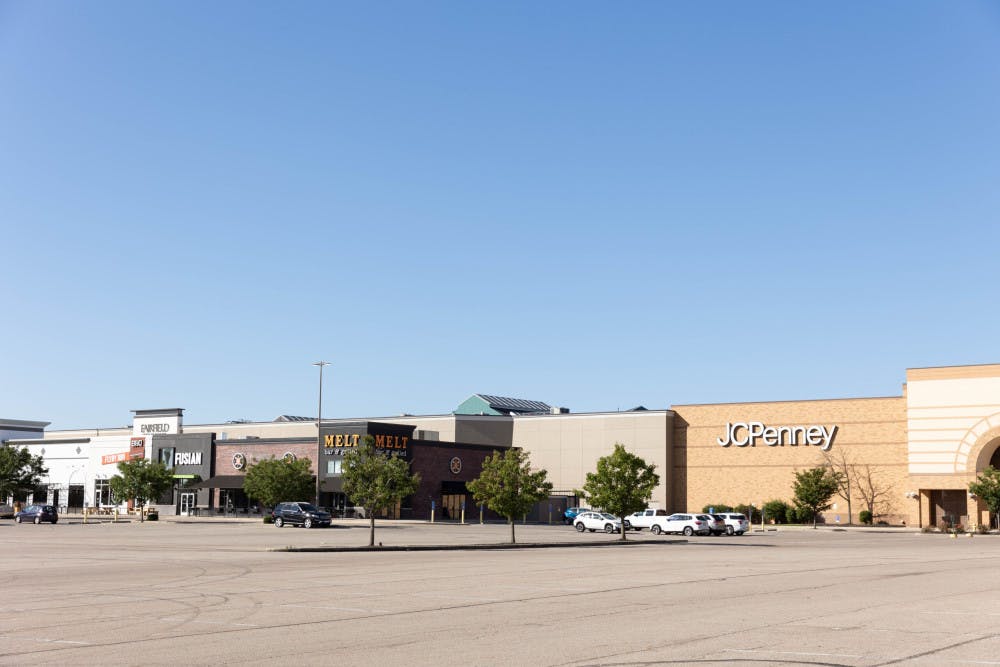Fairfield Commons | Photo by Bethany Althauser | The Wright State Guardian
In a hearing-dominant world, Deaf people and their culture are often left out or forgotten. Some members of the Deaf community get together at different events to share information and expand their culture.
Struggles of communication
On Sept. 8, some members of the Deaf community kick-started their Silent Dinners at the Fairfield Commons Mall. The Deaf Community Resource Center—an organization that provides support, services and other opportunities for those who are Deaf—hosts these events.
These dinners are just one way for the Deaf community to be involved and see one another on the second Friday of each month.
Steve Dunaway, a Deaf person, is always present at these events. His hearing wife, Barb Dunaway, is a senior lecturer in American Sign Language at Wright State University. She accompanies him at these dinners and helps serve as an interpreter for him if local students, peers and anyone else with minimal background in ASL need assistance in signing with Steve Dunaway.
Steve Dunaway was informative about Deaf culture and its importance today.

“Deaf culture is important because it allows hearing people to see we are just like everyone else, we just can’t hear,” Steve Dunaway said.
The Silent Dinners are a way for Deaf and hearing people to chat, communicate, share stories, be with friends and meet new people, Steve Dunaway explained.
Although being Deaf does not make Deaf people any different than people who are hearing, it does add struggles to their everyday life. Steve Dunaway commented about how this affects those who are Deaf in a dominantly hearing world.
“Deaf culture should be discussed more because it allows hearing people to realize that we can’t communicate in the same ways that they can,” Steve Dunaway said.
He goes on to give examples of these struggles.
“It is sometimes tiring to communicate with those who do not know ASL. If I’m sitting across from someone who does not know ASL, we can only text or communicate on paper. I text them, wait for their response, then they text me. It can be very tiring to go back and forth,” Steve Dunaway said.
The importance of inclusivity
Jennifer Profitt, an ASL professor at WSU, has been involved in the Deaf community as a hearing person since she was in college. She took ASL as a foreign language requirement. Upon completing her requirements, Profitt knew that she was not done learning the language and eventually fell in love with it. She volunteered as a tutor, learning from others, and grew more accustomed to ASL and the Deaf community. She is now an interpreter and professor.
Profitt also commented on Deaf culture as a hearing person.
“[Deaf people] are no different than every other hearing person, and if you feel like a hearing person deserves respect just because they are hearing, then Deaf people deserve respect, too. It is a basic human right,” Profitt said.
Profitt gave an example of how hearing people can help the Deaf community, even in the smallest circumstances. Being patient and compassionate can make a drastic difference.
“By going that extra mile to give them a pen and paper at a restaurant to write down their order, or being patient enough to let them pick out what they want and make sure their order is correct because so many times Deaf people go out to eat and their order is screwed up all because someone won’t take the time to make sure they didn’t put tomatoes on their sandwich,” Profitt said.
Because it is a hearing-dominant world, the Deaf community can get easily overlooked and cast away as a burden. Taking the time to practice inclusivity can make all the difference in their lives.
How to be involved
DCRC has ASL classes to sign up for and hosts events throughout the year. Oklahoma School for the Deaf hosts free online classes to learn ASL. YouTube is a great gateway to learn basic ASL greetings, the alphabet and so much more.
For more information about Deaf events and how to become involved, visit the DCRC website.












